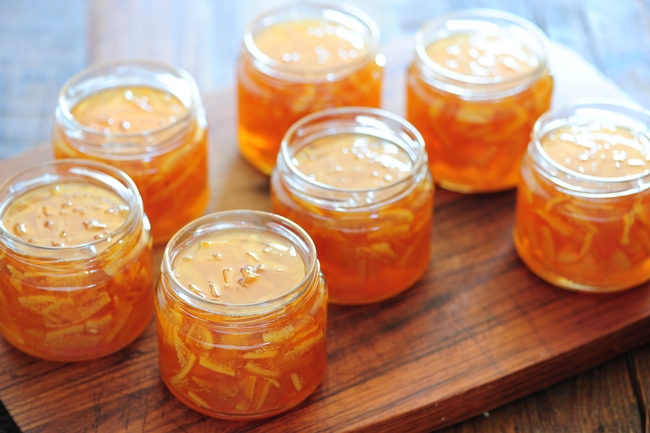Growing up, my parents told us stories of how as kids, they kept from starving during the Great Depression by not letting anything edible go to waste. To stay alive, they learned to eat beef tripe (stomach lining), chicken feet, cow tongue and other things not normally consumed. It was their stories that got me interested in learning about and sharing information on parts of fruits and vegetables normally discarded that can be preserved and eaten. Examples include citrus peel and watermelon rind.
The next time you eat an orange, grapefruit, tangerine or other citrus, you don't need to throw out the peel. Instead you can dehydrate it. Remove the pith (the white fibrous material between the skin and the peel) before placing the peel in your food dehydrator. You can also dry your peels in other methods, such as in the oven. Visit the National Center for Home Food preservation (www.nchfp.uga.edu) for more information on these alternative methods. For more information on dehydrating orange peels, see https://anrcatalog.ucanr.edu/pdf/8199.pdf.
What do you do with the dehydrated citrus peel? You can use the dried peels to add flavor to teas, or boil them to infuse the flavor in soups or rice. You can also grind the dried peels into a powder and sprinkle it on yogurt, salads, baked goods and other edibles for added flavor.

Fresh citrus peels are also often candied. The process basically involves simmering the peels in either a sugary syrup or corn syrup. You can find recipes on how to candy citrus peel at http://cecentralsierra.ucanr.edu/files/226102.pdf, https://ucanr.edu/sites/mfp_of_cs/files/312473.pdf and other sites.

If you have a sweet tooth, remember citrus peel is a key ingredient in marmalades. You're not limited to just orange marmalade. With lemon and grapefruit peel in addition to orange peel, you can make a citrus marmalade. You can find the recipe at https://nchfp.uga.edu/how/can_07/citrus_marmalade.html.
When summer comes around and you partake of a refreshing watermelon, don't throw out the rind. You can make pickles from the watermelon rind. The process to pickle the watermelon rind is similar to pickling other fruit. You'll need canning salt, sugar, distilled white vinegar, cloves, cinnamon and lemon. You can find the recipe and instructions for making watermelon rind pickles at https://nchfp.uga.edu/how/can_06/watermelon_rind.html.
But if you're like me and don't care for pickled foods, fear not, you can use the watermelon rind to make watermelon rind preserves. Besides the rind, you'll need sugar, salt, lemon juice and ground ginger. You can find the recipe for making watermelon rind preserves at https://nchfp.uga.edu/how/can_07/watermelon_rind_preserves.html.
Or, take the watermelon rinds and candy them in a similar way that you candy citrus rinds. Peel the green off, cut them into chunks and cook them in a syrup until they're translucent and then dry them. You'll be surprised at how good they are. Find the recipe at https://ucanr.edu/sites/camasterfoodpreservers/files/335009.pdf.
So the next time you eat citrus or watermelon, don't throw out the peels and rind before trying candied citrus peels and dehydrating the peels, and making pickles, candy or preserves from the watermelon rind. Remember that old saying, “Waste not, want not!”
For more information about the UC Master Food Preserver Program, including the Food Preservation Video and Recipe Libraries, visit mfp.ucanr.edu.
